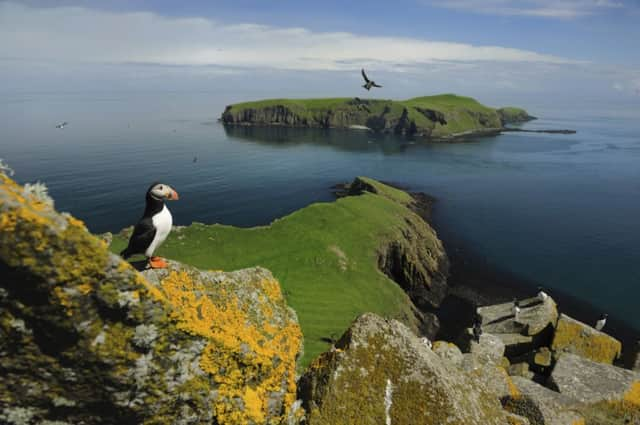Killer rats target rare birds on Shiant Isles


Puffins, guillemots, razorbills, shags, fulmars and kittiwakes on a group of remote Hebridean islands are being threatened by the chick-eating rodents, believed to be the descendants of an 18th-century shipwreck.
Now a leading conservation charity is making an urgent public appeal to raise nearly £350,000 to wipe out the non-native rats from the Shiant Isles, which lie off Harris and Lewis.
Advertisement
Hide AdAdvertisement
Hide AdHome to more than 150,000 seabirds that gather there to breed each year, the islands have been designated as Special Protection Areas for wild birds.
The isles are one of the most important seabird breeding sites in Europe, supporting 10 per cent of the UK’s puffins and seven per cent of razorbills.
But conservationists believe numbers could be even healthier without the throngs of rats.
“In reality, these islands are not as safe as they should be for seabirds to raise their young,” according to a spokesman for wildlife charity RSPB Scotland.
“As puffins and other species struggle to raise their only chick of the year, the black rats that inhabit the islands eat large numbers of chicks. This is not nature’s way. The rats are not native, but are invasive.”
The total cost of eradicating the vermin is £1.13 million. The charity has already secured 70 per cent of the cash from the European Union’s LIFE+ fund, Scottish Natural Heritage and major private donors.
Now a further £345,000 must be raised in the next month to ensure the crucial work can be completed.
“Year after year, significant numbers of Shiant Isle seabird chicks are killed by non-native black rats,” the spokesman said.
Advertisement
Hide AdAdvertisement
Hide Ad““We aim to remove the rats in time for the summer 2016 seabird breeding season – and every one after that.
“Public support is critical to get us over the finish line.
“By next summer the rats should be gone.”
The operation to eradicate the rats involves laying poison in bait stations throughout the isles. It is set to take place this winter, when the rat population is at its lowest and most seabirds are away feeding at sea.
Measures will be put in place to reduce risks to other wildlife, according to RSPB Scotland.
Black rats are native to tropical Asia and spread through the Near East in Roman times. They reached Europe by the first century and were quickly spread by seafarers across the world.
The rodents will eat almost anything, including birds, insects and many agricultural crops.
They are also known for their role in spreading bubonic plague, or black death.
A similar scheme off the Devon coast saw in a tenfold increase in Manx shearwaters and four times as many puffins.
The Shiants have been owned by the Nicolson family since 1937. Though currently uninhabited for most of the year, the isles had eight residents at the beginning of the 20th century. A simple bothy on Eilean an Taighe is the only habitable structure.
FOLLOW US
SCOTSMAN TABLET AND MOBILE APPS